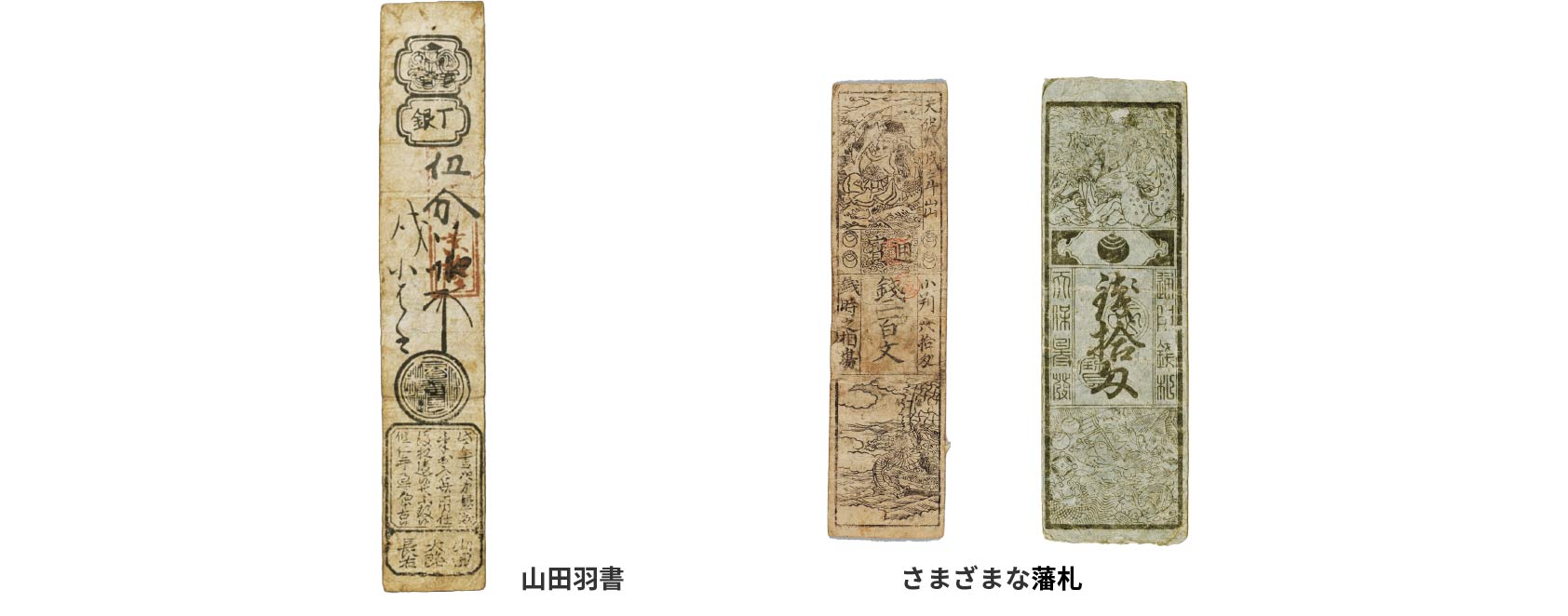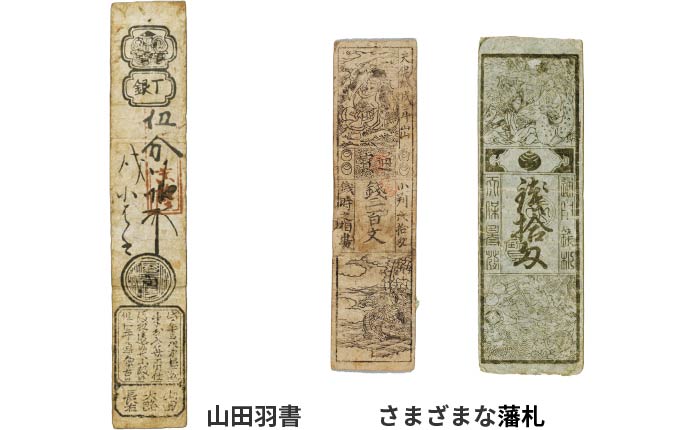Currency Museum Bank of Japan
Explore Exhibits
Visiting

Hours
9:30am - 4:30pm (no entry after 4:00pm)
Closed
Mondays (open when Monday is a holiday) and New Year's Holidays (Dec. 29 - Jan.4)
In addition to the above dates, the Museum may be closed temporarily at other times to change exhibits or for other reasons.
Admission
Free
Access
Subway
1 min. on foot from Mitsukoshimae Station on the Hanzomon Line (Exit B1)
2 min. on foot from Mitsukoshimae Station on the Ginza Line (Exit A5)
6 min. on foot from Nihonbashi Station on the Tozai Line (Exit A4)
JR
8 min. on foot from Tokyo Station’s Nihonbashi Exit
FAQs Japanese Currency
Press the each heading to see the answer and the relevant pages.
What was the first coin minted in Japan?
The Wado Kaichin coin, issued in 708, had long been considered the first coin minted in Japan. However, excavations at the Asukaike Ruins in Nara Prefecture in 1998 revealed that the coin named Fuhon-sen had been minted prior to the Wado Kaichin. The excavations also revealed that Mumon Gin-sen silver coins had also been in use before 708.


Why did old Japanese coins have a square hole in the middle?
The origin of a square hole in the middle of round coins can be traced back to the half-tael circular coin, which was issued in the third century B.C. by Qin Shi Huang, the First Emperor of China's Qin Dynasty. In China, circular and square shapes symbolize the sky and the earth, respectively, and the coin was considered good luck since it combined the two shapes.

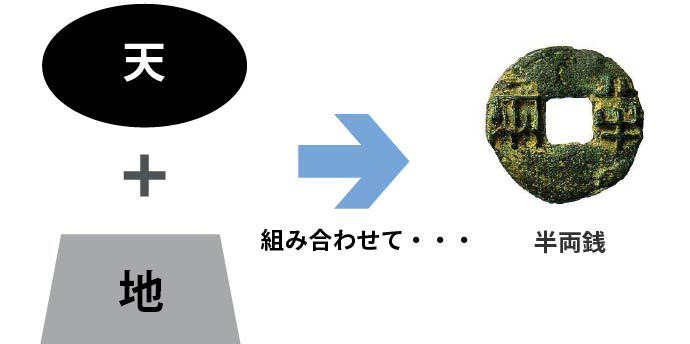
In the final stage of the minting process, a square bar was passed through the hole to make it easier to polish the sides of the coin. Similar types of coins – circular coins with a square hole in the middle – spread across East Asia, and in Japan they were used for more than 1,000 years.

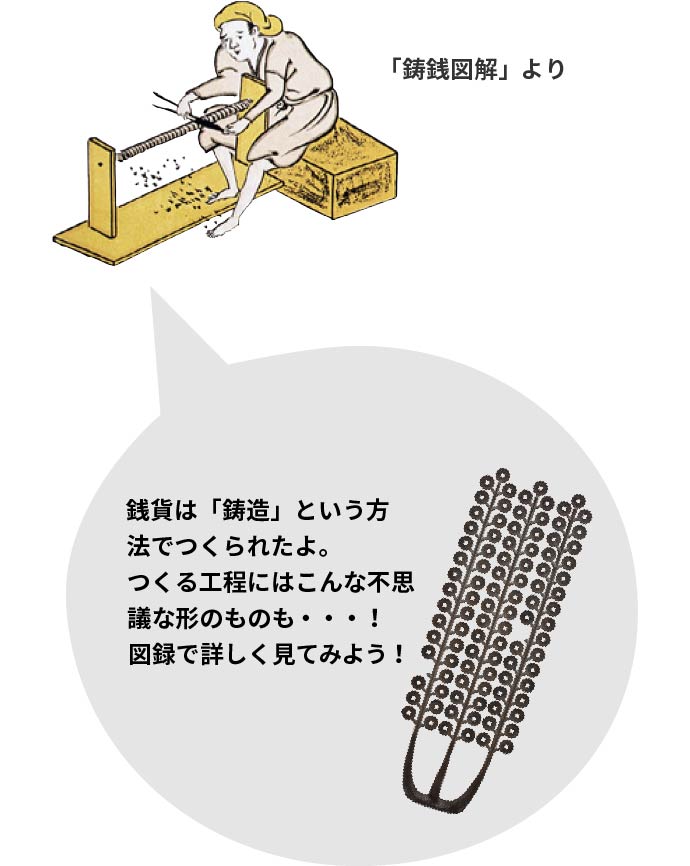
What were the currency units used during the Edo Period (1603-1867)?
During the Edo Period, the Tokugawa Shogunate government employed a tri-metallic monetary system based on gold, silver, and copper coins. Gold coins had face values based on the quaternary system, with the denomination of one Koban gold coin being set at 1 ryo, equivalent to 4 bu and to 16 shu, while silver coins were traded by weight with monme used as the basic unit of 1 monme, equivalent to 3.75 grams. Finally, one copper coin had the denomination of 1 mon (1,000 mon = 1 kanmon).
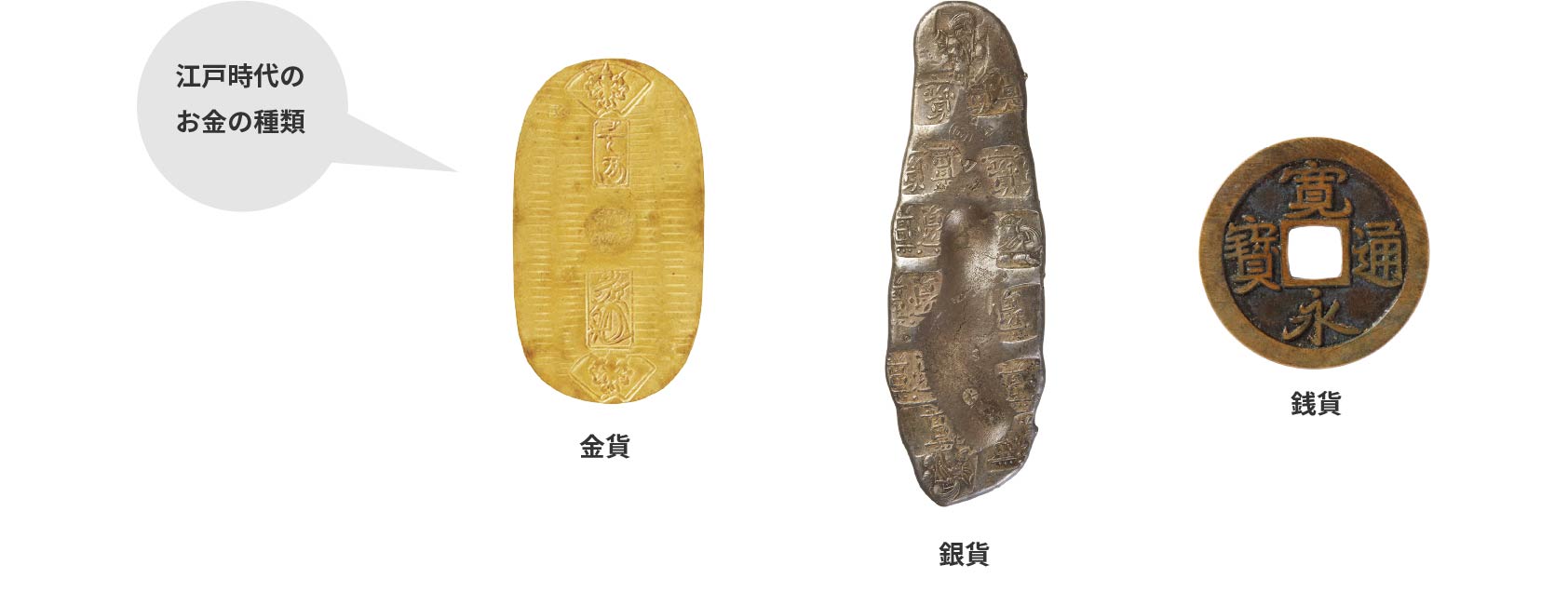
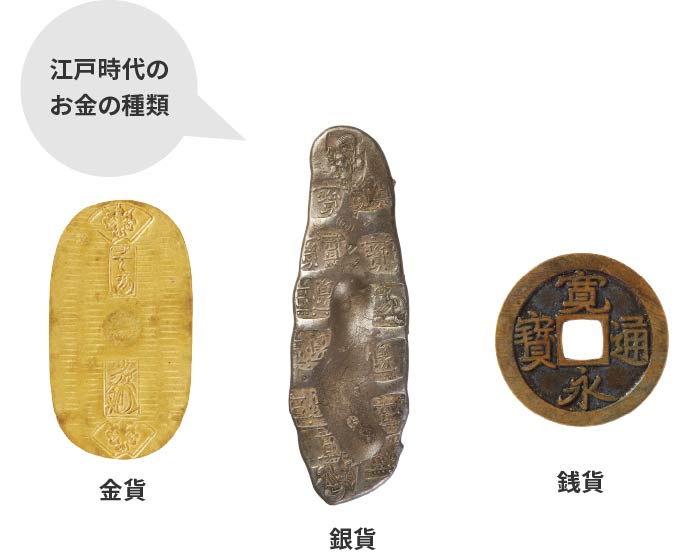
The official exchange rate was set by the Tokugawa Shogunate government – in the 18th century, 1 ryo of gold equaled 60 monme of silver or 4,000 mon of copper – but in practice these three types of coins were exchanged at market rates.
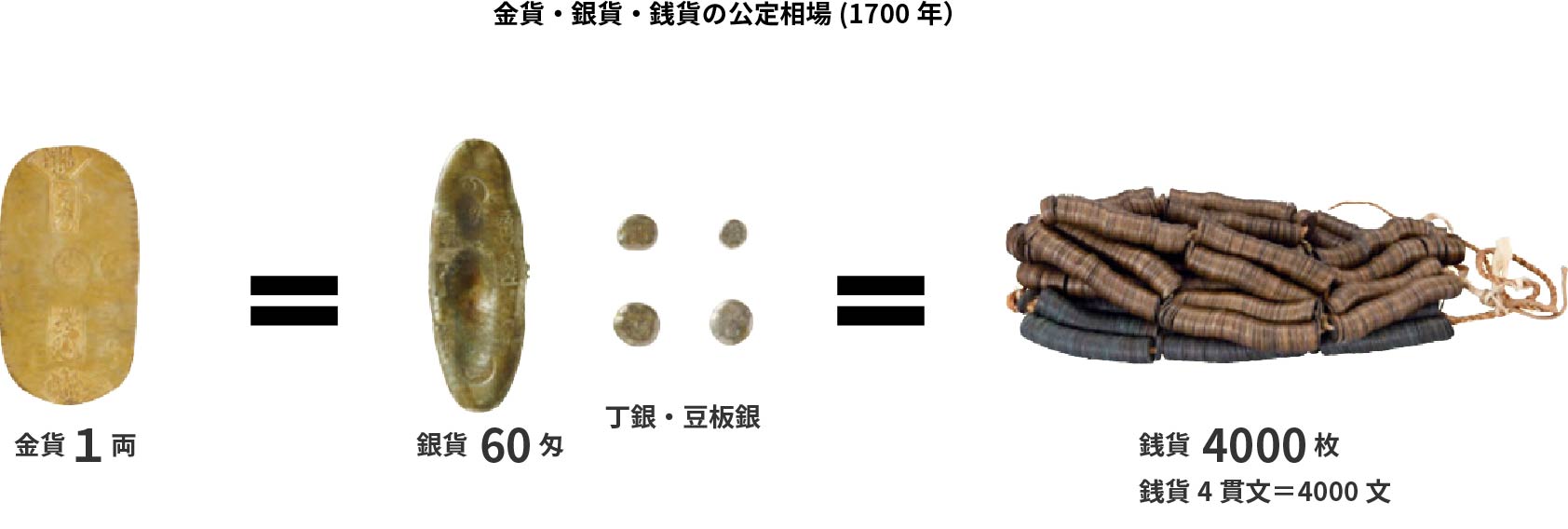

What was the oldest paper money issued in Japan?
Yamada Hagaki, the oldest paper money issued in Japan, began to be circulated in the Ise Yamada area (present-day Ise City, Mie Prefecture) around 1600. The Yamada Hagaki note was issued by priests from Ise Shrine in the course of commercial activities, and became a substitute for small change paid in exchange for silver coins. Accordingly, the note began to circulate as local currency in the area. Subsequently, similar notes were issued by feudal clans and merchants in large amounts throughout the country and circulated widely during the Edo Period.
